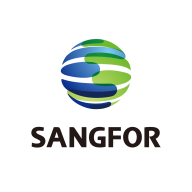


Fortinet FortiOS and Sangfor NGAF compete in the cybersecurity product category. Sangfor appears to have the upper hand due to its affordability and user-friendly approach, especially appealing to small businesses.
Features: Fortinet FortiOS offers UTM, VPN services, FortiView for troubleshooting, intrusion prevention, antivirus, and SD-WAN that supports direct cloud access. Sangfor NGAF provides strong intrusion detection, a highly rated vulnerability assessment, and application control for precise restrictions, known for its affordability and ease of use.
Room for Improvement: Fortinet FortiOS could improve its user interface, reporting, and VPN functionality, and its pricing and licensing model are often seen as high for smaller businesses. Sangfor NGAF may focus on interface improvements and better integration with other solutions, addressing limited web filtering capabilities and user experience issues. Pricing increases could challenge Sangfor's affordability advantage.
Ease of Deployment and Customer Service: Fortinet FortiOS is mainly deployed on-premises with some hybrid cloud usage. Its support has mixed reviews, facing criticism for slow response times. Sangfor NGAF is flexible, operating both on-premises and hybrid cloud environments. It is praised for effective and responsive technical support, though documentation could be improved.
Pricing and ROI: Fortinet FortiOS is considered more costly, suitable for mid-sized to larger enterprises due to its high renewal and licensing costs, but offers strong ROI through features and scalability. Sangfor NGAF's competitive pricing offers good value, particularly for small to mid-sized businesses, though potential maintenance cost increases are a concern. Both provide measurable ROI due to their feature offerings and ease of deployment.



Fortinet FortiGate offers comprehensive network security and firewall protection across multiple locations. It effectively manages data traffic and secures environments with features like VPN, intrusion prevention, and UTM controls.
Organizations rely on Fortinet FortiGate for its robust integration with advanced security policies, ensuring significant protection for enterprises, cloud environments, and educational sectors. It facilitates network segmentation, application-level security, and authentication management, securing communication within and between locations such as branches and data centers. Its efficient SD-WAN and UTM features enable streamlined data management and enhanced threat protection capabilities. Users appreciate its centralized management, facilitating seamless operations across diverse environments.
What are the key features of Fortinet FortiGate?
What benefits should users expect from Fortinet FortiGate?
Fortinet FortiGate is crucial in sectors like education, offering robust networks for secure data flow between campuses and facilitating remote learning. In enterprise environments, it allows efficient management of application traffic and security across multiple branches, while in the cloud, it seamlessly integrates with diverse platforms to enhance security infrastructure.
Fortinet FortiOS is a comprehensive security operating system that powers Fortinet's network security solutions. It provides advanced threat protection, network visibility, and centralized management for organizations of all sizes. With its robust features and intuitive interface, FortiOS enables businesses to secure their networks, applications, and data from cyber threats.
One of the key features of FortiOS is its advanced threat protection capabilities. It incorporates multiple security technologies, including firewall, antivirus, intrusion prevention system (IPS), and web filtering, to detect and block a wide range of threats. This ensures that organizations are protected against malware, ransomware, and other malicious activities. FortiOS also offers extensive network visibility, allowing organizations to monitor and analyze network traffic in real-time. This visibility enables businesses to identify potential security risks, detect anomalies, and take proactive measures to mitigate threats.
Additionally, FortiOS provides detailed reports and analytics, helping organizations gain insights into their network security posture. Centralized management is another crucial aspect of FortiOS. It allows businesses to manage and configure their security policies, devices, and users from a single console. This simplifies the management process and ensures consistent security across the entire network infrastructure.
Moreover, FortiOS supports integration with other Fortinet products, enabling seamless security orchestration and automation. FortiOS is designed to be scalable and flexible, making it suitable for organizations of all sizes. It offers a range of deployment options, including physical appliances, virtual machines, and cloud-based solutions. This flexibility allows businesses to choose the deployment model that best fits their requirements and easily scale their security infrastructure as their needs evolve.
Sangfor Next Generation Firewall (also known as NGAF) is a converged security solution providing protection against advanced threat, malware, viruses, ransomware and web-based attacks using integrated security features like firewall, IPS, anti-virus, anti-malware, APT, URL filtering, Cloud Sandbox, and WAF. As the world's first AI-enabled and fully integrated Next Generation Firewall & Web Application Firewall (WAF), NGAF offering the security visibility, real-time detection and response, simplified operation and maintenance and high-performance application layer security needed to operate an enterprise network in total security. Tested and proven to provide cutting-edge network security by ICSA Labs and endorsed by Gartner Inc., NGAF harnesses the power of Sangfor’s Neural-X threat intelligence and analytics platform and Engine Zero’s innovative malware detection to provide next-generation protection for today’s enterprise.
We monitor all Firewalls reviews to prevent fraudulent reviews and keep review quality high. We do not post reviews by company employees or direct competitors. We validate each review for authenticity via cross-reference with LinkedIn, and personal follow-up with the reviewer when necessary.